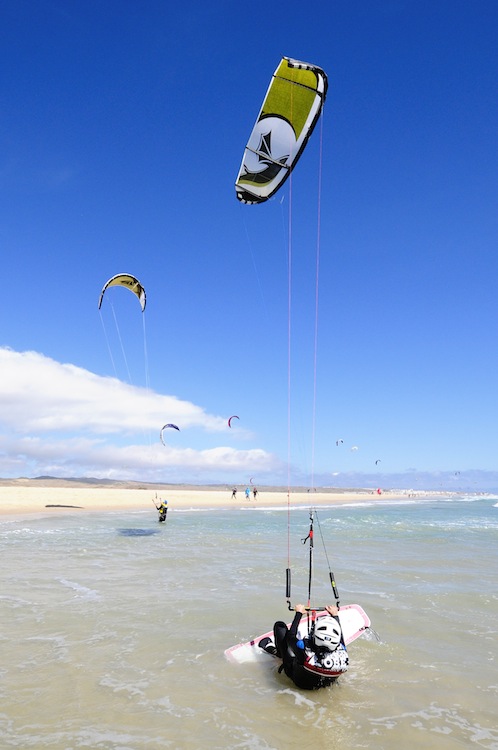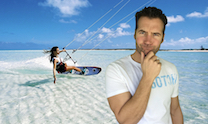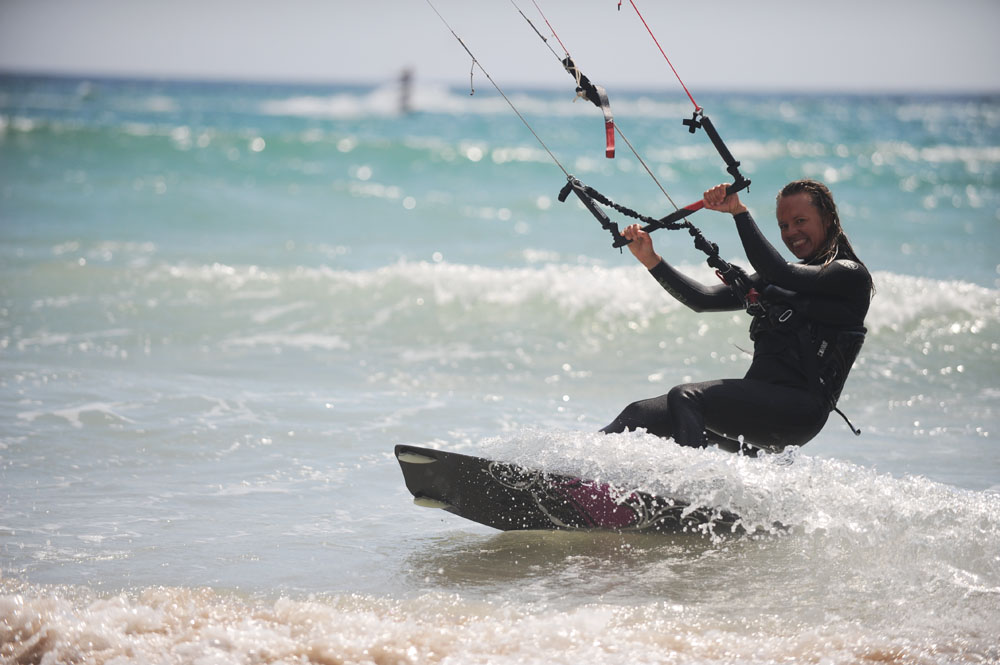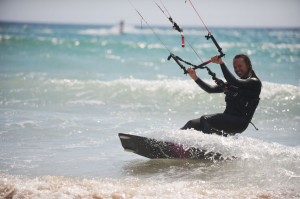
The Tantrum Kitesurf Show
Kitesurf insider secrets, tutorials, video feedback, and equipment advice all aimed at getting you riding better…faster

Subscribe to
The Tantrum Show
Water starting is one of those make or break moments in learning to kitesurf. It can be incredibly frustrating as you try time and time again, avoiding the waves, getting the damn board on your feet, waiting for the perfect moment…and flying straight over the front of the board for the thousandth time! Luckily there are a few common errors most people make when trying to water start which prevent them from riding up, up and away. The first is not pushing the front foot far enough around to release the board onto the plane and the second, of course, is pulling the bar in as you rise out of the water.
By not pushing the front foot far enough away from you as you rise out of the water, you will find yourself coming up up with the board too horizontal to the wind. Incredible amounts of power are then required from the kite to keep you going, as the board is creating a huge amount of resistance directly against the pull of the kite. By simply pushing forward with the front leg and coming up at an angle of 45 degrees or more away from the direction of the wind (ie. with the board pointing further downwind) you’ll release the board onto the plane. With the board pointing downwind your direction of travel is the same as that of the kite and thus much less power is required as you are working with the pull from the kite rather than fighting against it. A good trick here is rather than thinking of pushing your front foot away from you instead, pull your back leg in towards your bum, this will have the same effect but will mean that its much easier for you to keep your legs bent and control the power as you rise up from the water.
The second mistake people make is to pull on the bar whilst rising out of the water. As human beings is our instinct to pull ourselves up using something close to hand while attempting to stand up, also we naturally want more power if we are not quite out of the water and so pulling the bar seems like the right thing to do to give us that last little burst and pull us onto the plane…nothing could be further from the truth and this instinct must be resisted as we learn to water start
By putting the bar in we momentarily power up the kite, however when the kite reaches the bottom of the window (and we want to send it back up to initiate our second power stroke) if the bar is fully pulled in it will simply stall the kite backwards leaving us bobbing back into the water teabag style. What you need to aim to do is put enough power through the kite so that you have no desire to pull the bar in further as you have plenty of power already. This done, once the kite reaches the bottom of the window a simple tweak in the right direction will return the kite back towards the top of the window and put it in a position to start our second power stroke.
Hope that you found this post useful and that it helps your progression down the road to learning to kitesurf smoother and less frustrating, if you want more like this then subscribe to our YouTube Channel where every week I release a new video giving you all the kitesurf insider secrets, tutorials, video feedback, and equipment advice all aimed at getting you riding better…faster.
Subscribe to
The Tantrum Show




